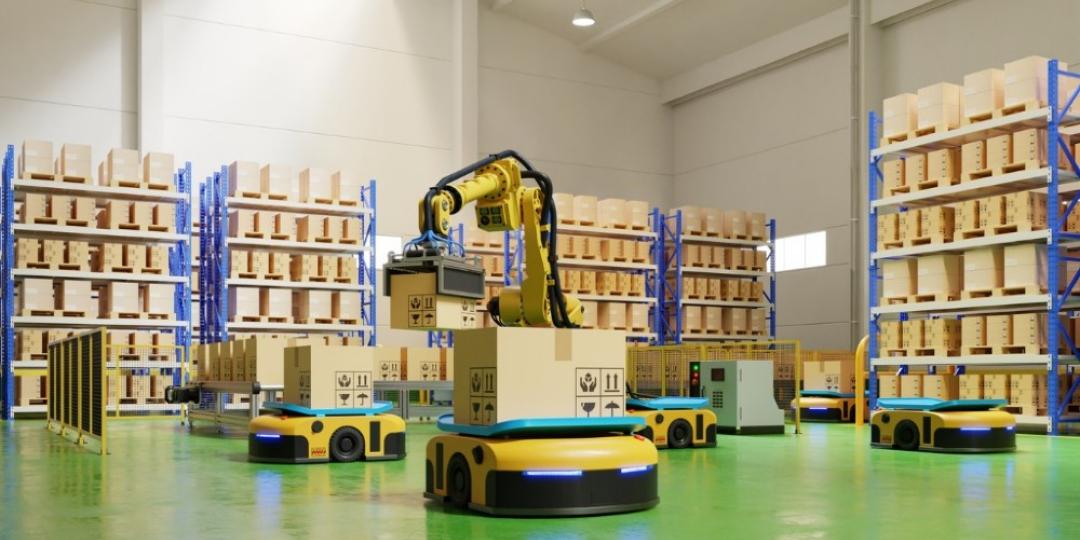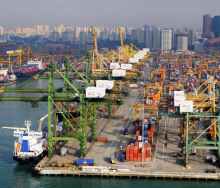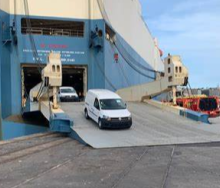Autonomous mobile robots (AMRs) are revolutionizing the warehousing landscape internationally and setting new standards for deliverables – a trend that comes under the spotlight at an upcoming warehousing conference in Johannesburg this month.
This technology is already being used to a limited extent in South Africa, with companies reporting wide-ranging benefits.
Andy Cooper of European Conveyors and Components, a specialist in materials handling and technology, will explore the topic at the free upcoming Warehouse Automation hybrid conference hosted by the Chartered Institute of Logistics and Transport: South Africa (CILTSA) in Johannesburg and online on 23 May.
According to digital technology company Zebra's most recent global Warehouse Vision Study, published last year, 99% of warehouse operators expected to deploy some form of AMRs in the next five years, although only 27% say they are using AMRs in their warehouses today.
Cooper said AMRs encompass exciting new technologies that are bringing about real Return on Investment (ROI), which is why the industry is quickly adopting them.
AMRs employ a system that has an Artificial Intelligence algorithm; they are constantly learning and can plan journeys independently.
"AMRs use Simultaneous Localization and Mapping (SLAM), which enables you to build a map and localize your vehicle in that map at the same time.
SLAM algorithms allow the vehicle to map out unknown environments," Cooper said.
Some of the numerous benefits that Cooper outlined, including AMRs in warehouses, are:
- Increased efficiency
- Rapid return on investment (one to three years)
- Quick deployment (AMRs can go live within three to four months)
- Better utilization of storage space (by up to 30%)
- Increased picking accuracy (up to 99.9%)
- Safer operations.
Contrary to popular belief, automation does not automatically take the place of people and need not result in job losses.
"Many warehouse companies are seeing that AMRs are making warehouse jobs less stressful, as operators' jobs require less walking and a reduced amount of handling and picking," Cooper said.
"Indeed, warehouse workers have reported increased productivity and a reduction in the mistakes they make.
“AMRs have enabled them to advance to new roles and opportunities.
“Technology is a huge enabler and problem-solver," he said.
Racking inspection and safe racking storage and racking systems can pose potential dangers in a warehouse.
Even a properly stationed pallet rack does not guarantee that products will not fall from the shelves.
Material Handling Equipment (MHE) is one of the most common causes of accidents in warehouses.
Leader Nkala, SHERQ director at local racking and shelving company Acrow, will be sharing practical safety tools and tips on this topic at the conference.
He will share the company's 10 Racking Health and Safety Commandments, highlight the compliance requirements of the Occupational Health and Safety Act (OHSA), and the importance of ongoing training.
"Racking and shelving are important assets in any warehouse – helping you make the most of your storage space and optimizing the organization of your products.
However, when these are damaged or incorrectly loaded or installed, they can become dangerous," he said.
The full conference program includes talks on:
- Warehouse automation: The Risks and Benefits by Martin Bailey FCILT – Industrial Logistic Systems
- Robots in the warehouse by Andy Cooper – Managing Director: European Conveyors & Components
- How to optimize digital transformation in the warehouse by Munya Husvu – CEO: ISB Optimus
- The current challenges we are facing in warehousing preventing automation and how to overcome them by Gerhard van Zyl – Group Operations Director: Professional Group of Companies.













